Paul Gauguin was the subject of a major monographic show in New York City for the first time in more than 40 years. On view at The Metropolitan Museum of Art from June 18 through October 20, 2002, Gauguin in New York Collections: The Lure of the Exotic featured approximately 120 works drawn from museums and private collections in New York City and State, many of which were rarely exhibited publicly. The exhibition also marked the first time that the Metropolitan displayd its own extensive holdings of the artist's work, numbering some 60 objects.
Comprising paintings, sculptures, ceramics, drawings, and prints, the exhibition vividly conveys the exceptional range of Gauguin's career, both in terms of his technical facility in a variety of media and the far-flung places and cultures that inspired his subjects. From Paris, Brittany, and Provence to Martinique, Tahiti, and the Marquesas, works from all phases of this illustrious artist's travels are on view.
Among the most fabled artists of any era, Paul Gauguin (French, 1848–1903) is as renowned for his brazenly unconventional life as for his vivid images of exotic locales. Much attention has been focused on his connection to Vincent van Gogh, and their brief but episodic period together in Arles. Gauguin spent his childhood in both Paris and Peru, and in his youth he sailed around the world with the merchant marines and the military. Returning to Paris, he began a career as a stockbroker, married a Danish woman and fathered five children, whom he held dear, despite his neglectful, peripatetic lifestyle. After the collapse of the French stock market in 1882, he began his profession as painter in earnest, voyaging to remote ports of call in Brittany, the Caribbean, and the South Pacific, notably Tahiti and the rugged island of Hiva Oa in the Marquesas, where he died in 1903 and is buried.
The Metropolitan Museum acquired its first work by Gauguin in 1921, and in the intervening years his work reached an ever-widening public audience through the concerted efforts of prominent New Yorkers and local institutions. Thanks to pioneering acquisitions and the generosity of donors, the Metropolitan and other museums in the state — from the Museum of Modern Art in Manhattan to the Albright–Knox Art Gallery in Buffalo — have afforded generations of viewers a fascinating view of Gauguin's genius.
The exhibition revealed that Gauguin was not only an exceptionally gifted artist but that, no matter where he traveled, he absorbed the sights and subjects encountered there into his own unique vision. Throughout his career he was open and responsive to all forms of culture and the visual arts, endeavoring to comprehend the underlying beliefs, customs, and practices they represented. In Brittany he carved and decorated his own wooden shoes, as well as the cupboards in his quarters, with local motifs. Toward the end of his life in the Marquesas he again carved wooden reliefs — and even coconuts — with exotic imagery.
Among the highlights of the exhibition were a group of nine oil paintings from the Metropolitan's collection, including
_-_Google_Art_Project.jpg/463px-Paul_Gauguin_-_Ia_Orana_Maria_(Hail_Mary)_-_Google_Art_Project.jpg)
Ia Orana Maria (1891),
an iconic image of a Tahitian Madonna and Child,
and the serene portrayal of

Two Tahitian Women holding flowers from 1899.
Two exceptionally important works in his oeuvre —
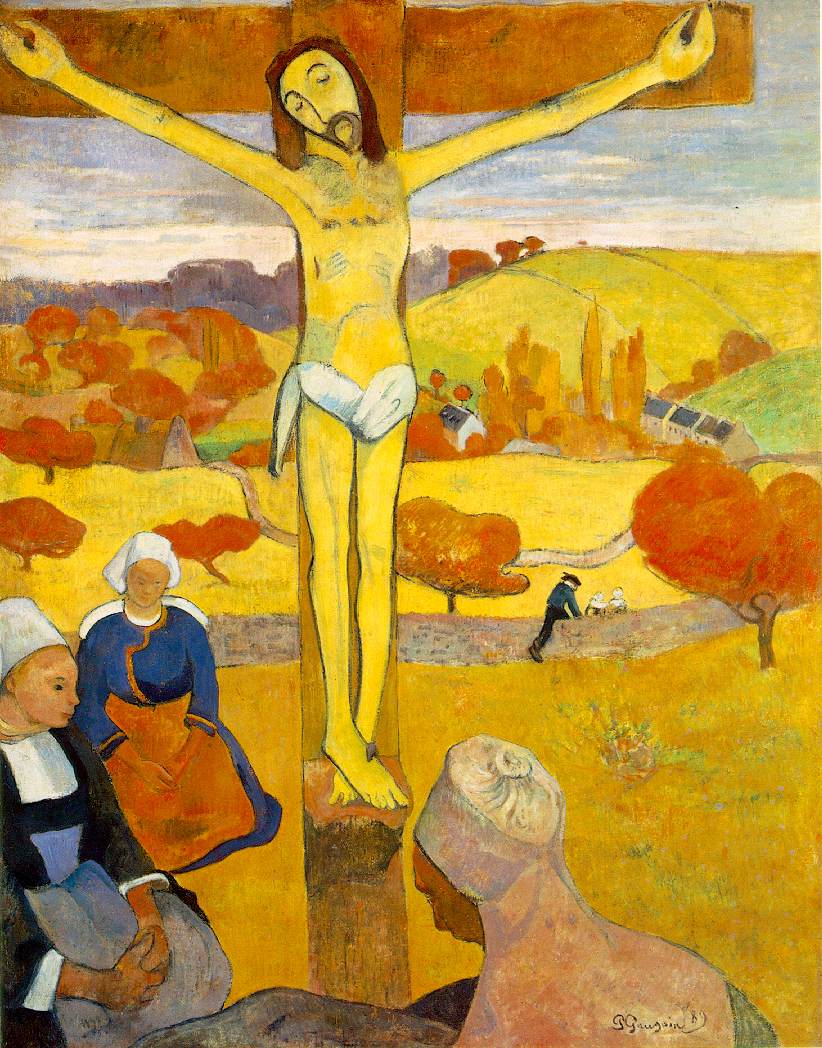
The Yellow Christ (1889)
and The Spirit of the Dead Watches (Manao tupapau) (1892)
— were on loan from the Albright–Knox Art Gallery in Buffalo.
The Museum of Modern Art lent several works, including
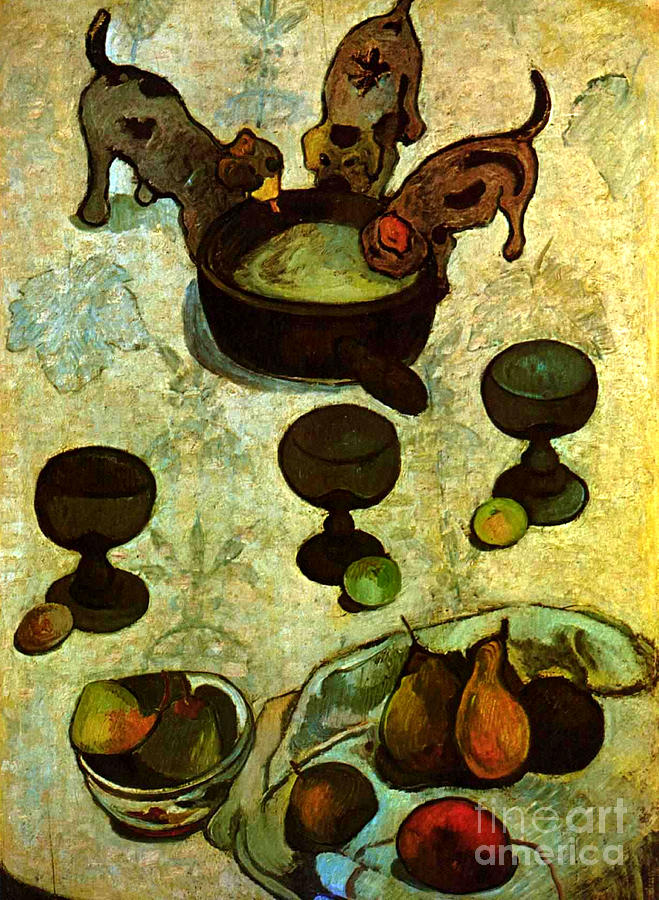
Still Life with Three Puppies (1888)

and The Moon and Earth (Hina Tefatou) of 1893,
which Gauguin presented to fellow artist, Edgar Degas.
Paintings from private collections included

The Wave (1888),

Young Man with a Flower (1891),

and Morning (Te Poipoi) (1892),
as well as a fine group of landscapes and still–lifes, and an engaging self-portrait.
Works on paper in the exhibition included the Metropolitan's
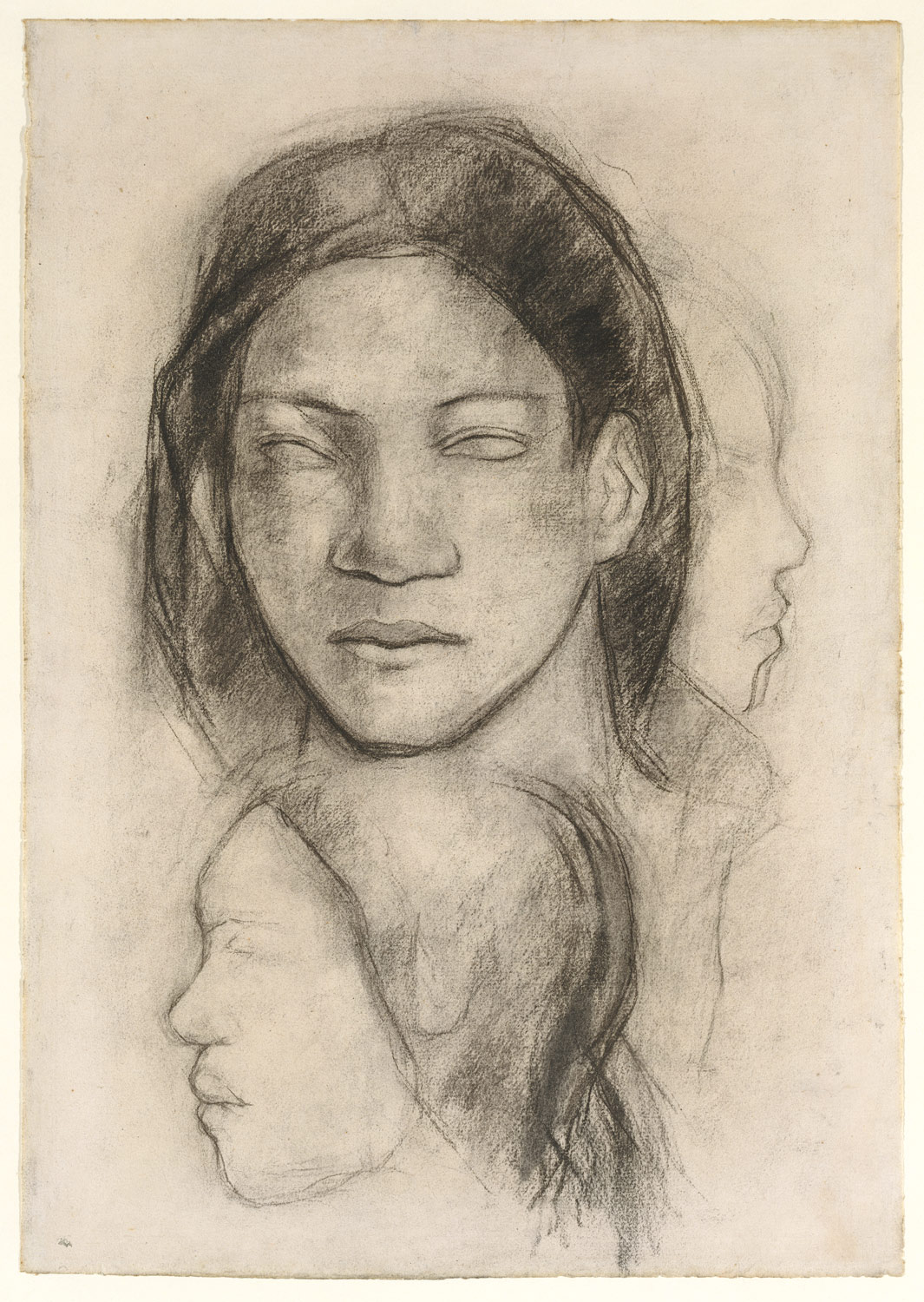
Tahitians,
a charcoal study of a beautiful young woman's face that conveys Gauguin's deep appreciation for exotic peoples.
His pastel,
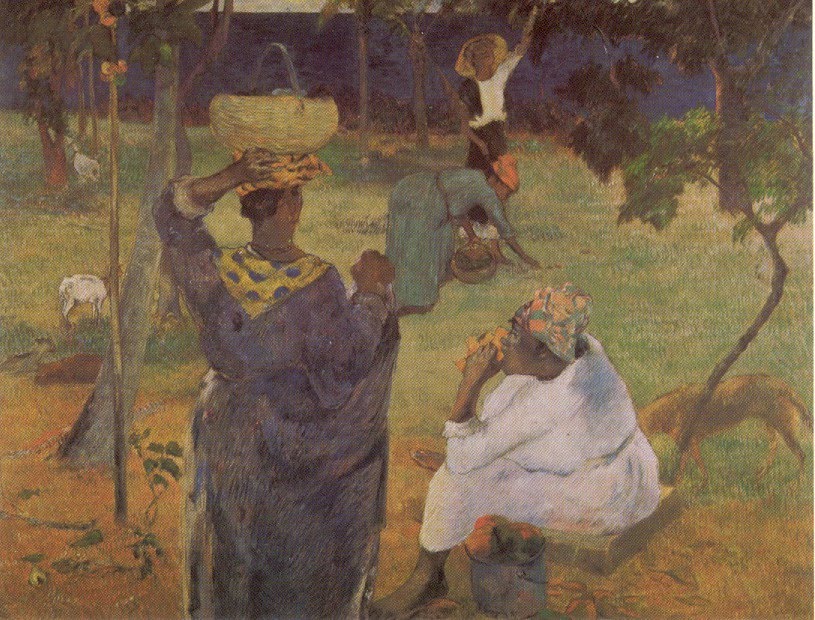
Martinique Women with Mangoes (Private collection; ca. 1887),
is one of his earliest portrayals of native islanders, whom he admired for being unspoiled by civilization.
An extensive selection of Gauguin's prints were also on view, including a complete series of zincographs on canary yellow paper that he showed in Paris during the Exposition Universelle of 1889, and the suite of woodcuts that he carved in a crude and primitive style to illustrate the largely fictional journal of his first trip to Tahiti, Noa Noa:
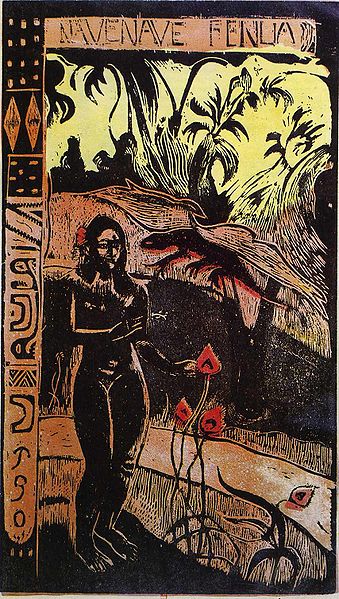
_-_Google_Art_Project.jpg/378px-Paul_Gauguin_-_Noa_Noa_(Fragrant,_Fragrant)_-_Google_Art_Project.jpg)
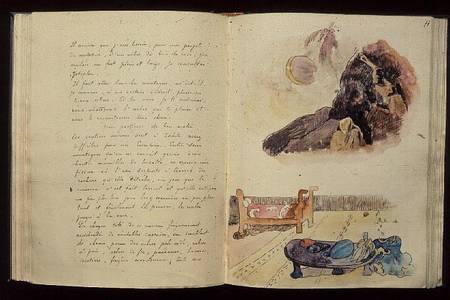
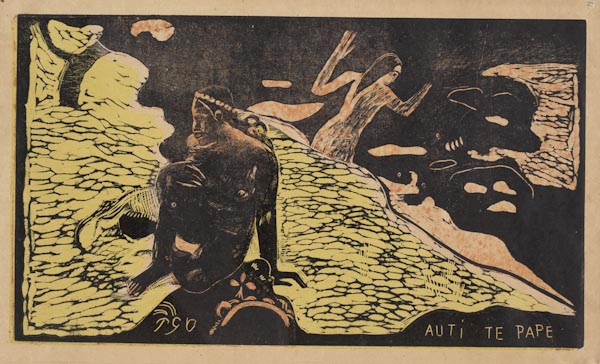
Throughout his career Gauguin experimented with and explored a wide variety of media and the exhibition features superb examples of sculpted marble, wood, and earthenware. Among the ceramics on view are unpublished works, such as the stoneware Vessel Decorated with Goats and a Girl from Martinique (Private collection; ca. 1887–89). Relief carvings are also be featured, including a walking stick from Gauguin's stay in Brittany, a panel from his tropical open-air dining room, inscribed Te Fare Amu (House for Eating), and an unusual double coconut from the Marquesas.
Gauguin in New York Collections: The Lure of the Exotic was co–organized by Colta Ives, Curator, Department of Drawings and Prints, and Susan Alyson Stein, Associate Curator of European Paintings, both of the Metropolitan Museum.

The exhibition was accompanied by a fully illustrated book, published by The Metropolitan Museum of Art and distributed by Yale University Press, with essays by the exhibition curators and conservators, Charlotte Hale and Marjorie Shelley.











